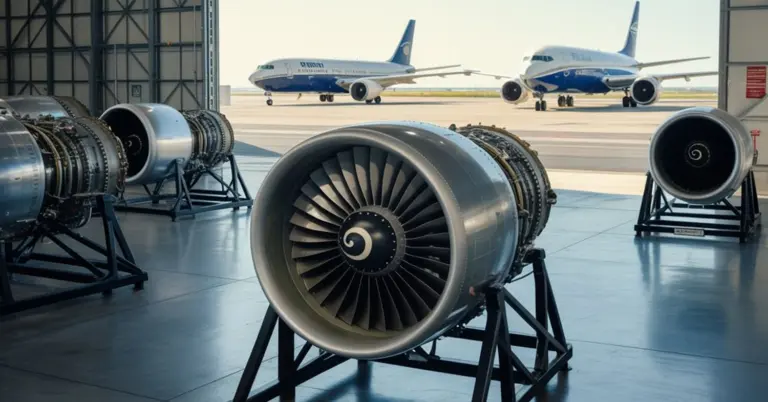What Was Invented in 2007 – A Comprehensive Guide
Overview of Inventions in 2007
2007 stands as a landmark year in technological innovation, marked by revolutionary inventions that transformed entire industries. Time Magazine, in partnership with CNN, recognized these achievements in their annual “Best Inventions of the Year” list, with Apple’s revolutionary iPhone claiming the top spot as Invention of the Year. This recognition was well-founded—these innovations continue to influence our daily lives in profound ways.
The year witnessed remarkable advancements across multiple sectors, from consumer electronics and digital media to healthcare, environmental technology, and transportation. These inventions went beyond solving existing problems, often creating entirely new categories of products and services that we now take for granted. Many represented fundamental shifts in how people interact with technology, consume media, and connect with one another.
Consumer Electronics – The iPhone and Kindle
The consumer electronics landscape underwent a dramatic transformation in 2007, with two devices standing out as revolutionary: Apple’s iPhone and Amazon’s Kindle. These inventions went beyond improving existing technology—they completely reimagined how we interact with mobile devices and consume written content. Their impact continues to reverberate through the technology sector and our daily lives.
Both devices departed radically from previous products in their categories. The iPhone represented far more than another mobile phone—it was a complete reimagining of what a handheld device could be. Similarly, the Kindle transcended being simply a digital book—it became a complete ecosystem for acquiring and consuming written content. These innovations signaled a shift toward more integrated, user-friendly devices that prioritized experience over technical specifications.
The timing of these inventions proved crucial. They arrived precisely as mobile internet connectivity was becoming more reliable and widespread, allowing them to leverage network capabilities in ways previous devices couldn’t. This convergence of hardware innovation and improved infrastructure created perfect conditions for these technologies to thrive and rapidly transform consumer behavior across multiple demographics.
The iPhone – Revolutionizing Mobile Communication
When Apple CEO Steve Jobs introduced the iPhone on January 9, 2007, he described it as “a revolutionary product that changes everything”—a prediction that history would vindicate. The device integrated several key functions into a single, sleek unit with a 3.5-inch multitouch display:
-
A mobile phone
-
A widescreen iPod with touch controls
-
An internet communications device
What truly revolutionized the market was its elegant, intuitive interface that made complex technology accessible to everyone.
The iPhone’s breakthrough features went well beyond hardware. Its Visual Voicemail feature transformed how users interacted with phone messages, allowing them to select specific voicemails rather than listening to all messages sequentially. The multitouch interface eliminated the need for a physical keyboard, maximizing screen space while providing a more versatile input method. These features set a new standard for smartphone design that competitors would spend years attempting to match.
Most importantly, the iPhone created an entirely new paradigm for mobile computing. By providing a full web browsing experience rather than the limited “mobile web” of earlier phones, it fundamentally changed user expectations about what was possible on a handheld device.
The Kindle – A New Era of Reading
On November 19, 2007, Amazon released the first Kindle e-reader, transforming how people access and consume literature. The original Kindle sold out in just 5.5 hours after its release—a testament to pent-up demand for digital reading solutions. It featured a 6-inch E Ink display that mimicked the appearance of paper, significantly reducing eye strain compared to reading on traditional backlit screens.
The Kindle’s key differentiator from previous e-readers was its wireless connectivity through what Amazon called “Whisper net.” This feature allowed users to browse, purchase, and download books directly to their device without requiring a computer connection—a groundbreaking capability in 2007.
The Kindle’s influence reached well beyond the device itself, catalyzing a fundamental shift in the publishing industry. By making e-books convenient and accessible, Amazon accelerated the digital transformation of literature, changing how books were published, distributed, and consumed.
Innovations in Health and Safety
The year 2007 witnessed significant advancements in health and safety technology, with innovations addressing critical needs in sports safety and chronic disease management. These inventions reflected growing concerns about concussions in sports and the rising prevalence of diabetes. They showed how technology could improve health outcomes and prevent injuries through real-time monitoring and data analysis.
Among the most notable health and safety innovations of 2007 was the Liddell Revolution IQ HITS (Head Impact Telemetry System) football helmet. This groundbreaking helmet incorporated sensors that could detect and measure the force and location of impacts to a player’s head during games and practices.
In the realm of medical devices, the Freestyle Navigator Continuous Glucose Monitoring System marked a major advancement for diabetes management. Approved by the FDA in 2007, this device provided people with diabetes near-continuous glucose readings through a small sensor inserted under the skin, eliminating the need for multiple finger pricks throughout the day.
Environmental and Engineering Innovations
The year 2007 marked significant progress in environmental technology and sustainable engineering, with innovations addressing growing concerns about climate change and energy consumption. With growing environmental awareness, inventors and companies responded with creative solutions designed to harness renewable energy sources and reduce wasteful power usage in everyday life.
One of the most promising environmental innovations of 2007 was the Power Buoy, developed by Ocean Power Technologies. This device converted the mechanical energy of ocean waves into electricity through a sophisticated system of hydraulics and generators.
On the home front, the Green Switch Wall Plug addressed the growing problem of “vampire power”—the electricity consumed by devices in standby mode. This innovative system allowed homeowners to completely cut power to designated outlets with the flip of a single master switch, eliminating standby power consumption from multiple devices simultaneously.
Transportation Innovations – Sky bus and More
Transportation saw remarkable innovation in 2007, with developments spanning air travel, personal transport, and conceptual vehicles. These developments addressed mounting concerns about fuel efficiency, environmental impact, and accessibility of transportation options—particularly pressing as oil prices reached record highs during this period. From budget air travel models to entirely new propulsion concepts, 2007’s transportation innovations sought to address these mounting challenges.
In the aviation sector, Sky bus Airlines launched in 2007 with an ultra-low-cost business model that promised base fares as low as $10. The airline adopted several innovative approaches to keep costs down:
Perhaps the most intriguing transportation concept of 2007 was the compressed air car, which generated significant buzz for its potential environmental benefits. The most prominent example, the AirPods developed by Motor Development International (MDI), claimed to run entirely on compressed air stored in carbon-fiber tanks, producing zero direct emissions.







